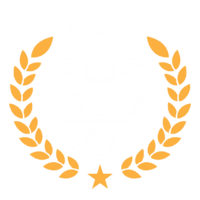In today’s educational landscape, accreditation is a powerful marker of quality and trustworthiness. But having accreditation from just one organization may no longer be enough to stand out. Being accredited by multiple organizations not only elevates an institution’s credibility but also demonstrates a broader commitment to excellence, ensuring that students receive top-tier education in line with global standards. Let’s dive into why multiple accreditations are a game-changer for educational institutions.
1. Enhanced Credibility and Reputation
Accreditation is a seal of approval that an institution meets the highest standards in education. When an institution is accredited by several reputable bodies, it significantly enhances its credibility. This is because each accrediting organization may have different standards, focusing on various aspects such as curriculum quality, teaching methods, ethical standards, and student support services.
For instance, an institution like The School of Spiritual Healing Arts (SOSHA), which offers training in various holistic modalities, gains substantial credibility when it is accredited by organizations that specialize in both holistic medicine and alternative therapy. This variety shows a commitment to adhering to the best practices across multiple dimensions, making the institution more attractive to prospective students.
2. Global Recognition and Mobility
Multiple accreditations often lead to greater global recognition. Institutions accredited by international bodies can appeal to a broader student base, making their certifications and programs recognized and respected across borders. This is especially important for students who wish to work or practice internationally. For instance, being accredited by organizations like the International Practitioners of Holistic Medicine (IPHM) and other similar entities allows an institution’s graduates to practice in various countries with ease.
Global accreditation also means that students can confidently transfer their credits or qualifications to other institutions or organizations, knowing their education is recognized by more than one governing body. This enhances the institution’s reputation and provides graduates with a greater range of opportunities.
3. Higher Standards of Quality Assurance
Each accrediting body brings its own set of rigorous standards. By seeking accreditation from multiple organizations, an institution signals its commitment to meeting—and often exceeding—a wide range of quality benchmarks. This goes beyond simply offering good programs; it ensures that teaching methodologies, student support, faculty qualifications, and assessment processes are all held to the highest possible standards.
For example, if an educational institution is accredited by both a specialized body in spiritual healing and a broader educational accreditor, it shows that the institution is delivering both niche-specific expertise and general educational excellence. This layered approach to quality assurance instills greater confidence in students and industry professionals alike.
4. Greater Trust from Students and Employers
Accreditation from multiple bodies signals to students and potential employers that the institution provides a well-rounded, robust education. It indicates that the institution’s programs have been vetted by experts from various fields and meet a diverse set of requirements.
Employers seeking skilled graduates are more likely to trust candidates from institutions with multiple accreditations. It reassures them that the individual has been trained according to the highest standards, making them more competitive in the job market.
5. Diverse Perspectives and Continuous Improvement
Each accrediting body focuses on different facets of an educational program. By working with multiple organizations, institutions are constantly exposed to diverse perspectives and recommendations for improvement. This leads to a dynamic process of growth and refinement, where the institution is consistently updating its practices to remain aligned with the best in the industry.
For instance, one accrediting body might focus heavily on ethical standards, while another emphasizes curriculum design. Combining these insights ensures that the institution not only excels in one area but is holistically developed to provide a top-tier educational experience across the board.
6. Increased Marketability and Student Enrollment
Accredited institutions have a competitive edge in attracting students. When potential students see that an institution has multiple accreditations, they are more likely to trust that the education they receive will be valuable, comprehensive, and globally recognized. This leads to increased student enrollment as more individuals seek out institutions that can provide them with a well-rounded, highly regarded education.
For SOSHA and similar institutions, multiple accreditations enhance their appeal to a global audience, including students who want to be sure they’re receiving education that meets diverse, international standards.
Being accredited by multiple organizations is more than just a badge of honor; it is a testament to an institution’s commitment to providing the highest quality education. It signifies trust, credibility, and a willingness to adhere to and surpass rigorous industry standards. In a world where educational options are abundant, multiple accreditations set an institution apart, showing that it is prepared to meet the complex needs of a diverse and global student body.
Want to check out our programs inside our International Accredited Organisation? CLICK HERE

